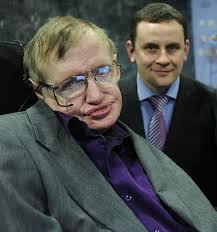What is universe?
The universe is all planets, moons, minor planets, stars, galaxies, the content of intergalactic space and all matter and energy.
 |
| The universe is all of space and the stars, the planets, and all other forms of matter and energy in it. |
The Universe in physical science suggests everything, everywhere, all the space. In different words, all of space, time, and their content is the universe. It includes all the galaxies, black holes, stars, planets, and moons. It additionally includes all kinds of energy and matter.
 |
| The Universe is all we can touch, feel, sense, measure or detect. It consists of living things, planets, stars, galaxies, dust clouds, light, and even time. |
Stephen Hawking
Stephen Hawking (1942-2018) once said:
“Look up at the stars and not down at your feet, try to be of what you see, and wonder about what makes the Universe exist. Be curious.”
Professor Hawking was a British theoretical scientist, cosmologist, author, and director of research at the Centre for Theoretical Cosmology.
In 2016, Prof. Hawking advised that black holes could be portals to different universes, maybe black holes aren't ‘eternal prisons’ from that something their gravity captures ne'er escapes. He puzzled whether or not there could be the way out.
Greek and Indian philosophers
Scientific models of universes originate to Greek and Indian philosophers. They Drew geocentric models that had our planet Earth in the middle of everything.
Copernicus and Newton
It was not until Nicolaus Copernicus (1473-1543), a Polish astronomer and scientist, those heliocentric models emerged. Copernicus’ model had the Sun in the middle of our scheme.
Sir Isaac Newton (1642-1727) designed on Copernicus’ work once he developed the law of universal gravitation. Newton was a British scientist, astronomer, physicist, and theologian.
Eventually, models started locating our scheme among the Milky Way galaxy. The Milky Way is one among the cosmos’ roughly one-hundred billion galaxies.
Astronomers and astrophysicists say that the Universe has neither middle nor a position. This can be as a result of the distribution of all the galaxies is even and therefore the same all told directions.
According to a team of British scientists, the Universe isn't spinning or stretching in any explicit direction. It's increasing uniformly.
The universe contains a beginning early within the twentieth century. Scientists discovered that the Universe was expanding and had a starting.
Approximately eightieth of the mass within the cosmos seems to exist in matter. We have a tendency to cannot observe matter, however, we all know it's there.
two things, infinite -- stretching forever in each
direction, or finite -- with a position.
When Newton represented the law of gravity, he considered
this too and patterned it must be infinite. As a result of otherwise all the gravity out
there would have collapsed the universe by now. Then, Einstein assumed the universe was static -- making a cosmological constant to form his math work. Then, Edwin
Hubble came along…
Edwin Hubble
In 1925, Edwin Hubble was looking at galaxies. He got time on a telescope in California and began
measuring the Doppler shift of the light coming from galaxies.
Doppler shift is why an ambulance or train sounds different
coming at you than after it passes. That frequency shift is measurable, and he
found each galaxy we have a tendency to might see was flying away from us. He
realized space is expanding! He published his findings in the Proceedings ofthe National Academy of Sciences in 1929.
Einstein called his
cosmological constant his "greatest blunder."
Mathematician Georges cosmologist resolved Einstein's
equations during this expanding universe, and once we accomplished it had been expanding, we tend to might
assume it started somewhere and therefore, the Big Bang was conceived!
This was (and is) huge, and only getting bigger.

Mars Home Stay We have 4 No. of Rooms with Fully Air Conditioned and well furnished. And 2 Party Halls with 100 people gathering. Our professional staff is trained to take great care of you and your family's comfort. Location of Our Hotel is Nearby Taj Mahal is around 1.5 km. After all you deserve a break, and it needs to be a good one. The city rose to prominence as the capital of the Mughal Empire in the 16th Century. Many of the city's acclaimed heritage sites date back to this era, including the resplendent Taj Mahal.
ReplyDeleteHomestay in Agra | Home Stay Near Taj Mahal | Best Homestay in Agra
Mars Home Stay Near Taj Mahal | Homestay In Agra Near Taj Mahal
Mars Homestay | Best Room In Agra | Mars Homestay In Agra
Mars Home Stay
E-mail: marshomestayagra@gmail.com
+91-9897266123, 9568133330
Casinos & Apps for iPhone | DrmCD
ReplyDeletePlay Slots from the 충주 출장안마 best developers at CasinoDynamite! 안성 출장샵 New Slots from the best 강원도 출장샵 developers at CasinoDynamite! Play for Free or 거제 출장마사지 for 남원 출장마사지 Real Money!